






role: game designer
The Caribou Trail is an intimate character driven narrative game that lets the player take part in Newfoundland’s World War I journey in Gallipoli, 1915.
While the game is an interactive character drama, we aimed at designing an experience in which the player remains in control throughout the game, reducing friction between gameplay and storytelling.
To achieve such results, many different techniques were used thoughout the design process to make sure we would hit the intended effect, such as storyboards (to design the intended player experience), immersive gameplay prototyping and even scientific studies to give us data on some difficult design dilemmas.
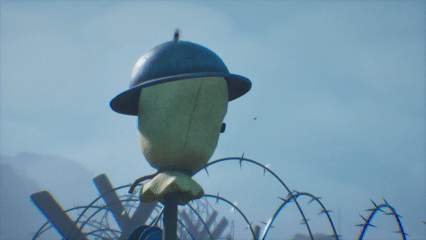
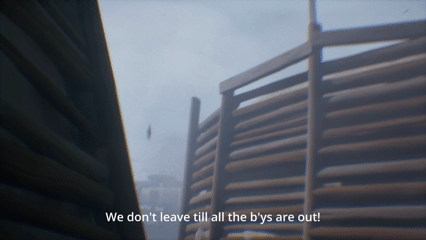


STUDIO
Unreliable Narrators
DATES
Decembre 2023 - Today
TOOLS
Unreal Engine 5, Perforce,
Notion, Photoshop, Articy, Excel, Miro, Jira
Design process
the "fail state" dilemma
Originally, Unreliable Narrators aimed to create experiences tailored for casual gamers who aren't looking for challenge within their gameplay loop. However, we had to revisit this question once it came time to make a game set during World War I:
"Should the player be able to die in certain situations?"
When we were designing preliminary timelines for the game's narrative, we quickly realized that the most interesting ideas involved the notion of danger and avoiding it. After early prototypes, we witnessed a disconnect between our original aim of keeping our games non-challenging and the obvious moments where stepping into No Man's Land should probably involve the risk of dying if the player is not careful. This topic quickly became divisive and had to be supported by more than just design opinions.
So, I took it upon myself to gather scientific studies on related subjects such as fail states in video games and their impact on different gamer profiles, as well as comparisons between gaming frequency across various genres and the search for challenge in video games. I also created a mind map of other narrative titles that tried a different approach to fail states versus community feedback.
The results were very interesting and allowed us to create specific bullet points that would guide us in designing the few sections involving the notion of danger:
-
Some players will call your bluff and expect the game to react accordingly.
-
After knowing that the game can kill them, the player should not encounter failure again in a manner that suggests a lack of skill.
-
What happens when you die should feel to the player like a form of content they get to witness.








the map system
Part of our design goals was to provide an immersive experience of World War I in Gallipoli that went beyond the combat aspect. One of the core elements we observed through our initial research was how confusing it was to navigate trenches—even with knowledge of how they were built. Even once you became familiar with them, the layout could change from one day to the next due to explosions destroying certain parts. We had to find a way to convey a hint of that disorientation without frustrating the player at every level.
Knowing that the majority of our main sections wouldn't change much throughout the game, we decided to give the player an old-fashioned map and a compass to bring an immersive aspect to navigation. The key was ensuring that we had noticeable landmarks throughout the environment that players could use to compare with the map. Certain elements would be added to the map later in previously blank sections—such as No Man's Land—after they were explored.
One of the aspects I tested early in development was the level of detail our maps would include. The idea was that our character would fill in sections and objectives as they progressed, so the map couldn't feature precise topography, but it still needed to offer a visually clear representation of the landscape. During my initial research, I found sketches made by actual WWI soldiers in Gallipoli and worked to incorporate some of those stylistic elements into our designs.
the binoculars
At first, it was developped as a tool to help the players recognise landmarks from the map, but we noticed during early playtests how it was almost one of the favorite features of our players who were almost scavenging for special elements that could only be seen from afar. We then decided to develop scripted events that would only be triggered when something is viewed from a certain distance through the binoculars, such as a short comment from our main character or even a more complex sequence involving NPCs to make it feel like the player simply spotted them at the right moment, aligning with out design goal of letting the player remain in control during narrative events.
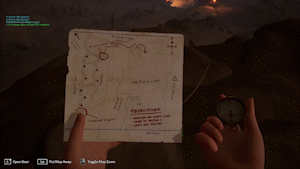
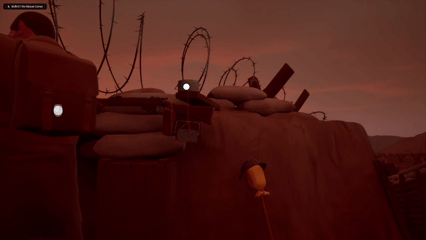

Another exemple of this is the rowing motion on a boat. We had to plan in advance where the arms would land within the frame at every stage of the rowing motion while keeping the talking characters in front of us correctly framed. We even had to think of the composition in our back if the player were to look behind, triggering a branch in the animation were the left arm has to let go of the oar and grab the side of the boat. One we go back to looking forward, the arm comes back on the oar, allowing the rowing gameplay.

first person mocap
A great part of this project involved motion capture, both for NPCs and first person character. Each of them had their requirements, especially in terms of framing, adaptatibility to various FOV and even input driven playback.
Planning a mocap animation for a first person camera required a lot of planning in terms of trame composition. Mocap animated NPCs already required us to know where exactly they would be standing or sitting, what they would be interacting with, how readable the silhouette should be depending on the distance from the player, etc. First person mocap also adds a tricky element of thinking in advance about the complete layout of the frame, where the UI will be, if the hands are correctly in frame and even how some motion will be allowed from the player's input.
To make casual actions more immersive and engaging, some of these animations became what we called input driven animations. These animations were thought in advance as a graph, defining every stage the animation the player would encounter through their inputs. An exemple of this is the a scene where we have to replace soldiers standing on trenches steps with dummies. The interaction had to be thought in sections to make sure every part could be modular and adjusted to different measurements.
For such occasions, I love working with storyboards. They are a great way of clarifying the important beats that a frame should hit, allowing us to see in advance how to shoot our animation, where it should be adjustable and when we expect an input from the player.
level sequences
I frequently use the level sequence tool in Unreal Engine to create more heavily scripted sequence that need constant timing or even a bit of animated first person camera.
While Caribou technically is a 100% first person camera game, I did have to create an opening sequence that required a seperate cinematic camera. The idea was to have a camera travelling through French trenches later in the war and set up our game as a campfire story being told to these soldiers from the western front. Having limited resources, I had to plan the sequence with a storyboard that would showcase exactly what would be visible in the shot and from what distance.

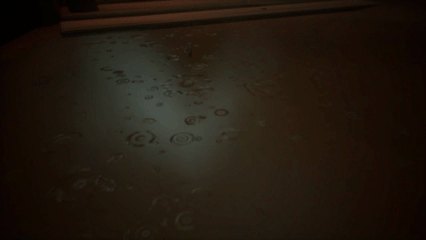
The following shots come from an upcoming teaser trailer. I made them in a level sequence using all of our assets. These are actually one single uninterrupted shot in which I used a great variety of tools and expertise:
-
Everything is animated through a level sequence in Unreal Engine 5
-
NPCs are scripted through our gameplay path tools
-
Explosions are called through our custom nodes used throughout the game
-
Lighting is progressively switching using another custom tool that inputs values through data assets
-
Everything else is hand animated for the purpose of this teaser.
-
Prior to creating the shot, I storyboarded everything to validate what would be visible.

